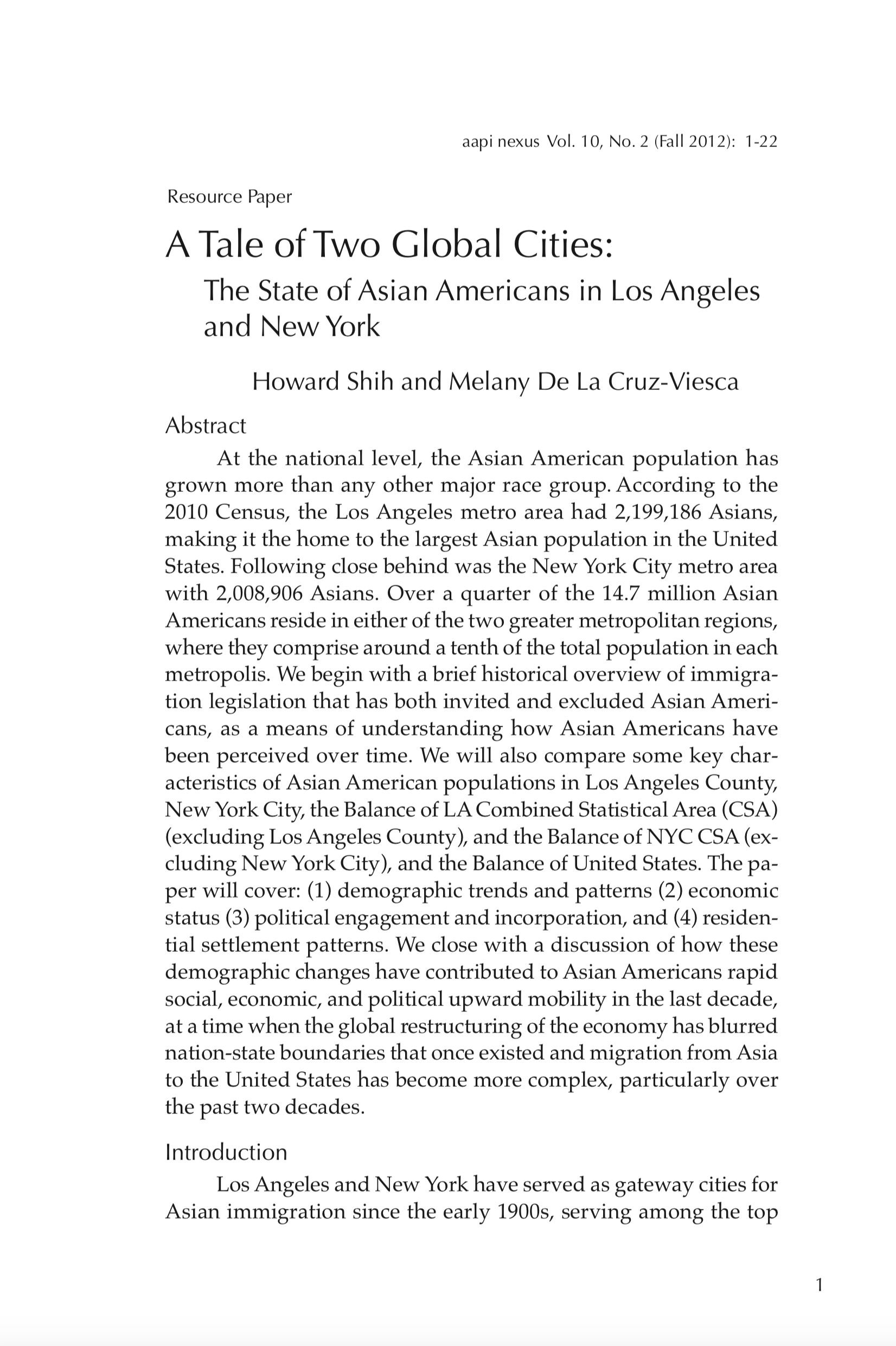“A Tale of Two Global Cities: The State of Asian Americans in Los Angeles and New York”
Volume 10:2, p. 1 (2012)
by Howard Shih and Melany De La Cruz-Viesca
ABSTRACT: At the national level, the Asian American population has grown more than any other major race group. According to the 2010 Census, the Los Angeles metro area had 2,199,186 Asians, making it the home to the largest Asian population in the United States. Following close behind was the New York City metro area with 2,008,906 Asians. Over a quarter of the 14.7 million Asian Americans reside in either of the two greater metropolitan regions, where they comprise around a tenth of the total population in each metropolis. We begin with a brief historical overview of immigration legislation that has both invited and excluded Asian Americans, as a means of understanding how Asian Americans have been perceived over time. We will also compare some key characteristics of Asian American populations in Los Angeles County, New York City, the Balance of LA Combined Statistical Area (CSA) (excluding Los Angeles County), and the Balance of NYC CSA (excluding New York City), and the Balance of the United States. The paper will cover: (1) demographic trends and patterns (2) economic status (3) political engagement and incorporation, and (4) residential settlement patterns. We close with a discussion of how these demographic changes have contributed to Asian Americans rapid social, economic, and political upward mobility in the last decade, at a time when the global restructuring of the economy has blurred nation-state boundaries that once existed and migration from Asia to the United States has become more complex, particularly over the past two decades.
PREVIEW:

 Download
Download
Article Citation:
Howard Shih and Melany De La Cruz-Viesca (2012) A Tale of Two Global Cities: The State of Asian Americans in Los Angeles and New York. AAPI Nexus: Policy, Practice and Community: 2012, Vol. 10, No. 2, pp. 1-22.
